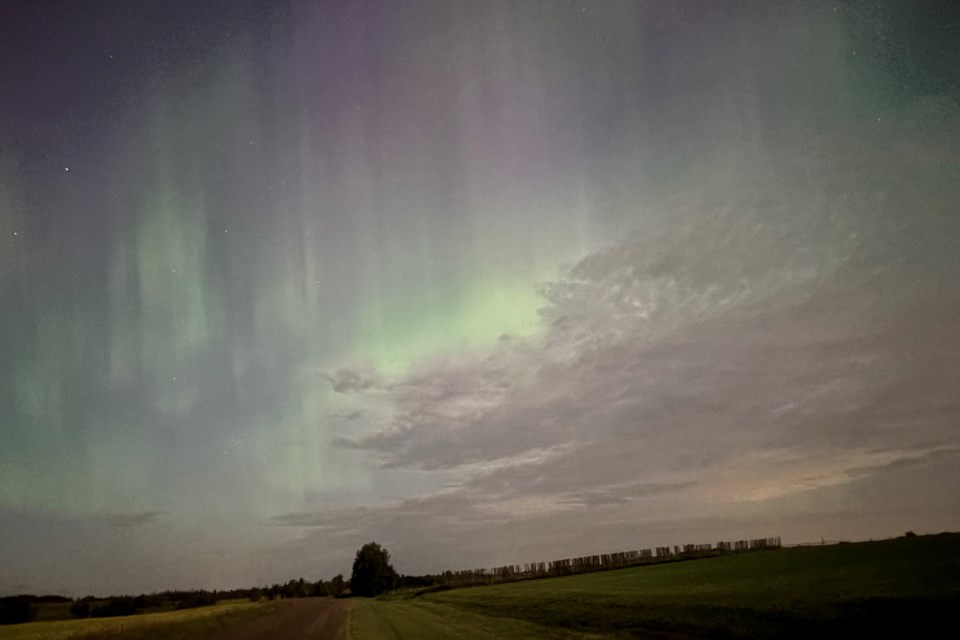MOUNTAIN VIEW COUNTY – Northern lights lit up the sky across northern, central and southern Alberta late Friday night and early Saturday morning.
At 12:10 a.m. a.m. on Aug. 9, the University of Alberta’s AuroraWatch issued a red alert.
The alert was in effect until 7 a.m. on Saturday, indicating there was a very good chance – more than 70 per cent -- of auroral activity.
The university provides a real time monitor of geomagnetic activity in the Edmonton area, though larger activity can be seen Alberta-wide.
People from Red Earth Creek, Edson and Grande Prairie south to Mountain View County, Airdrie, Calgary and Claresholm reported seeing the phenomenon known as aurora borealis starting Friday late night.
Highway 292 North of Calgary 20250809T0930Z
— Harlan Thomas (@theauroraguy) August 9, 2025
A lovely substorm on the way home....#Aurora #Auroraborealis #northernlights@NASAEarth #NASAJPL @NASASun @AlbertaAurora@TweetAurora @nenecallas @Magnetodawn@TamithaSkov @PipmizerX @abastrophile@NoelBowman13 @TravelAlberta @CBC… pic.twitter.com/0vnwAd99uN
In posts on social media, some enthusiasts said the full moon -- which was also on display -- limited views of the northern lights, while others said it was too cloudy in their areas to view them.
According to the Canadian Space Agency, the northern lights most often occur at altitudes of 100 to 300 kilometres in the atmosphere but can sometimes occur at altitudes of up to 600 kilometres from the ground.
Northern lights in Alberta province, Canada. 09/08/2025. pic.twitter.com/xrsK9pTU34
— ZetaTalk Followers: Watch X, Planet X, aka Nibiru (@ZT_Followers) August 9, 2025
The agency says the colours of the northern lights are determined by a number of factors including the composition of gases in Earth's atmosphere, the altitude where the aurora occurs, the density of the atmosphere and the level of energy involved. They include:
• Green: Green is the most common colour seen from the ground and is produced when charged particles collide with oxygen molecules at altitudes of 100 to 300 kilometres.
• Pink and dark red: Occasionally, the lower edge of an aurora will have a pink or dark red fringe which is produced by nitrogen molecules at altitudes of around 100 kilometres.
• Red: A bit higher in the atmosphere (at altitudes of 300 to 400 kilometres), collisions with oxygen atoms produce red auroras.
• Blue and purple: Hydrogen and helium molecules can produce blue and purple auroras but the agency says these colours tend to be difficult to see against the night sky.



